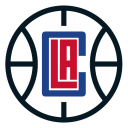America’s Cup 2024: everything you wanted to know but were afraid to ask

What is the America’s Cup?
Established in 1851, the America’s Cup is the oldest active trophy in international sports and sailing’s pinnacle competition, where yacht clubs representing different nations compete for the trophy. The Cup’s format pits the defending yacht club, known as the defender, against the challenger in a match race. Each edition of the America’s Cup is organised by the defender, who have the authority to choose the location, date, rules, and boat design for the event.
If it is an international trophy, why is it called the America’s Cup?
It was initially named the RYS £100 Cup simply because it was worth £100 before the American syndicate mistakenly engraved it as the 100 Guinea Cup. It was then named after the winning yacht in the inaugural race around the Isle of Wight: the America. No, they were not particularly creative at naming their boats in the 19th century.
So how does it work?
Teams must first compete in a series of regattas, culminating in the Louis Vuitton Cup, which determines the main event’s challenger. This year’s matchup will see Team New Zealand as the defender take on Ineos Britannia after the Britons won the right to challenge New Zealand by beating Italy’s Luna Rossa Prada Pirelli comfortably in the decisive race. The current format features a best of 13 series; the first to win seven races takes home the Cup. This year’s edition begins with the first two races on 12 October. After that, the third and fourth races are set for 13 October. Subsequent races will occur on 16 October for the fifth and sixth races and on 18 October for the seventh. If necessary, the eighth race will be held on 18 October, the ninth and 10th on 19 October, the 11th and 12th on 20 October. The final race, if required, will take place on 21 October.
Related: Ready about! A short history of the America’s Cup – in pictures
And are these teams evenly matched?
In terms of history, no. New Zealand have won the Cup four times (1995, 2000, 2017, and 2021) and fall only behind the United States (30) for the most wins. Switzerland have two wins (2003 and 2007) and Australia won once in 1983, breaking the US’s dominance. A Great Britain team have never won the Cup despite making 22 attempts.
But in terms of the present day?
Well, also no. In fact, Ineos Britannia are the first British challenger since the Royal Thames Yacht Club’s attempt in 1964 (in a boat skippered by Sir Peter Scott, the son of the Antarctic explorer Captain Robert Scott), so they are hoping to end a lengthy drought. New Zealand, on the other hand, have become synonymous with the modern day America’s Cup since their first victory in San Diego and they have established themselves as a powerhouse. Leading their charge this year is Peter Burling, a two-time Cup winner and Olympic gold medallist known for his composure and technical expertise. With a strong lineup and advanced strategies, this New Zealand team are poised to deliver their most formidable defence yet.
So there is no chance for Ineos Britannia?
Let’s not jump the gun so quickly. Sure, the Brits have not even competed in the actual Cup match since 1964 and sure, showings in the most recent editions in Bermuda and Auckland left much to be desired. But that has not disheartened the team principal, Sir Jim Ratcliffe.
Wait, hold on. Manchester United’s Jim Ratcliffe? He is into sailing?
The one and only. After a drink with Ben Ainslie, the team captain and co-team principal, he reportedly invested £110m in the team – the biggest sponsorship in British sailing history. The investment provided the financial support to build and test two advanced foiling monohull boats. It also allowed Ainslie, the most successful sailor in Olympic history, to keep key team members, including the chief executive, Grant Simmer, a four-time America’s Cup winner. The Ineos team have developed their boat with support from the engineers of the Formula One team Mercedes and, as part of the broader Ineos Sports Group, drew expertise from their cycling team.
Sounds like a lot of work has been put into this one boat. What makes it so special?
Both teams will compete in the AC75 class of boats, which made its debut in the previous edition. These hi-tech monohulls use foils to increase speed and agility. Restrictions this year limit each team to just one boat, increasing the pressure on designers to deliver a winning craft right from the start. Here comes the science bit: innovations in aerodynamics, hydrodynamics, and mechatronics (the integration of mechanical and electronic systems) always play a crucial role in the competition and the performance of the AC75s under varying wind conditions combined with the teams’ strategic decisions during races will be pivotal.
A competition steeped in history that is not only a test of sailing skill but also a showcase of cutting-edge technology and strategy. I am sold. Where is it taking place and how can I watch?
This year’s event takes place in Port Vell, Barcelona, where the vibrant race village will offer an immersive experience for fans. The racing will occur just off the Barceloneta beachfront, providing excellent viewing opportunities for those along the shore. Moreover, enthusiasts can charter their own boat on the water for premium viewing. Those doomed to the couch or office chair (not that we are condoning anything of the sort) can still catch all the action on the America’s Cup official website and its YouTube channel, or on TNT Sports and Discovery+.

 Yahoo Sport
Yahoo Sport 




































































